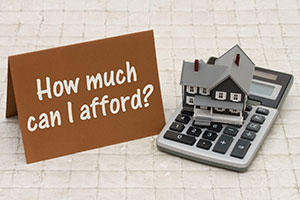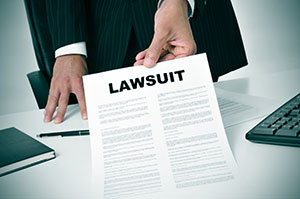 Moving into a new home is, without a doubt, one of the proudest and happiest moments in a person’s life. Moving in, however, is hardly the first day in the calendar of the home acquisition process. For this day to come, many things have to fall in place first. Buying a home can be a rewarding adventure but the process, in itself, is one which you have to be very diligent about. Each step of the way, there can be hidden traps waiting to give you a sucker punch.
Moving into a new home is, without a doubt, one of the proudest and happiest moments in a person’s life. Moving in, however, is hardly the first day in the calendar of the home acquisition process. For this day to come, many things have to fall in place first. Buying a home can be a rewarding adventure but the process, in itself, is one which you have to be very diligent about. Each step of the way, there can be hidden traps waiting to give you a sucker punch.
A fraudulent title deed, a strange encroachment, a structural deficit, an overtaxing mortgage structure or a ‘bad’ property could be some of those traps you wanted to avoid. If you can take up the challenge step by step, there is a great chance you will reach the other end of the property purchase process successfully. Let us look into 11 steps of buying a house and also find out that one particular aspect which can become most burdensome for buyers.
Step 1: Before buying a house, find out if you are ready to buy
 Home ownership brings an ineffable sense of joy but at the same time there are practical issues that need to be taken care of. First, it is a monetary responsibility (we will talk more about it in Step 2). Second, a home asks for maintenance and even if you hire a quality property manager or a property management firm (for your investment portfolio), you will need to give it your personal time and attention.
Home ownership brings an ineffable sense of joy but at the same time there are practical issues that need to be taken care of. First, it is a monetary responsibility (we will talk more about it in Step 2). Second, a home asks for maintenance and even if you hire a quality property manager or a property management firm (for your investment portfolio), you will need to give it your personal time and attention.
Find out if it is the right time to buy. Well, I have posed this question before, but I myself do not much believe in it that much. There is no such thing as a “right time to buy” because every occasion may prove to be the right one in hindsight. If you are investing for long, you are safe from short-term market fluctuations. Even if you are buying above market level and a steep downward movement is expected, you can hold the property till the next property cycle and sell it at its then perceived peak. That will be a time when you will definitely register a terrific capital gain.
Even if you are buying with a 5-year plan in mind, you can never be too sure about a phase being a “bad phase for buying”. Counter-cyclic real estate developments have at least taught us this much in the past. For all you know, some properties may even keep soaring in price long after the market hits its peak level.
Step 2: When looking for houses for sale, prefigure how much you can afford
 Any wise person will vouch for the fact that we should not spread our feet beyond the sheet. It holds true for every aspect of life, not the least in the case of mortgage. We should not over-assert ourselves in the pursuit of that dream home. While some believe that home mortgage shall never exceed 33% of net income you earn in a month, I believe that this percentage is better kept to 25%. The Gross Debt Service Ratio (GDSR) Calculator puts this percentage at 32%. This percentage differs for every individual and this, in part, depends on his present level of debt.
Any wise person will vouch for the fact that we should not spread our feet beyond the sheet. It holds true for every aspect of life, not the least in the case of mortgage. We should not over-assert ourselves in the pursuit of that dream home. While some believe that home mortgage shall never exceed 33% of net income you earn in a month, I believe that this percentage is better kept to 25%. The Gross Debt Service Ratio (GDSR) Calculator puts this percentage at 32%. This percentage differs for every individual and this, in part, depends on his present level of debt.
Never seek the advice of the mortgage company. It is very hard for them to keep an unbiased attitude. Their job is to tell you the extent to which you can borrow. It is not their job to recommend you the amount you should ideally borrow. And remember, what you can borrow (your creditworthiness) may be far above your ideal borrowing amount.
There are two kinds of costs involved in buying a home. There’s the one-time cost, then the monthly cost attached to it. The one-time cost can include, but is not limited to, upfront fee, taxes, property transfer tax, stamp duty, inspection fee and legal fee. Monthly costs primarily involve mortgage but there are secondary expenses like utilities, maintenance and insurance. Both these variables go a long way in determining the amount you can safely afford for your home.
Step 3: Buying house – The whats and wheres of home purchase
 Do you like the hum and bustle of the city? Are you enjoying the various facilities and amenities it has to offer? Yes, I am talking about the ease of transport, shopping hubs, cafe lifestyle, wellness spa, and healthcare services, among other things. Or are you somebody who can go all out for the idyllic, old-world charm of the suburbs? Which area are you planning to live in, a highly gentrified one, suburbia or the rural area? Of course, city centre prices and suburb prices in themselves can become deciding factors in this regard.
Do you like the hum and bustle of the city? Are you enjoying the various facilities and amenities it has to offer? Yes, I am talking about the ease of transport, shopping hubs, cafe lifestyle, wellness spa, and healthcare services, among other things. Or are you somebody who can go all out for the idyllic, old-world charm of the suburbs? Which area are you planning to live in, a highly gentrified one, suburbia or the rural area? Of course, city centre prices and suburb prices in themselves can become deciding factors in this regard.
Now let’s talk about the kind of home you may be looking for. It is wise to prefigure if you are looking for a detached house, an apartment, a duplex or a town house or maybe a prestige market condo. All these have their own merits. Some are great for living purposes, others make for superb investments, and some may just be good in both departments. While on the subject, I recommend that you read one of my other pieces discussing which makes a better investment between a detached dwelling and an apartment.
Step 4: First home buyers need to choose the right buyer’s agent
 Buyers agents are the professionals who will stick with you till the end, and if you foster a great relationship with them, perhaps they can help you buy many more homes in the future. So, the least you can do is ensure that you eliminate the chaff from the wheat. Screen buyer’s agents diligently. Take a look at their past record, seek references, Try to probe into their level of expertise (you may fall short of what’s needed due to your own lack of expertise…but worth a try). Ask them what their method of operation is.
Buyers agents are the professionals who will stick with you till the end, and if you foster a great relationship with them, perhaps they can help you buy many more homes in the future. So, the least you can do is ensure that you eliminate the chaff from the wheat. Screen buyer’s agents diligently. Take a look at their past record, seek references, Try to probe into their level of expertise (you may fall short of what’s needed due to your own lack of expertise…but worth a try). Ask them what their method of operation is.
For example, some buyer’s agents choose the property on their own while others involve the buyers in the property selection exercise. Ask them if there are cases in the past where they have faced sudden difficulties in the purchase and how they handled such situations. In short, get to know them as best as you can, both within their personal and professional capacities.
Step 5: Buy home but not before comparing prices
 While there are many ways of comparing price of homes, nothing can be more effective than going through the comparable sales figure. This figure will tell you how homes of similar size, build, amenities and neighbourhoods have sold in the recent past (three months as a general rule, but can extend to six). This gives you an idea regarding the price you should be willing to buy at. This said, every home may have a unique selling point for which you may be willing to pay extra dollars, but the ballpark is well and truly established by the comparable sales figure.
While there are many ways of comparing price of homes, nothing can be more effective than going through the comparable sales figure. This figure will tell you how homes of similar size, build, amenities and neighbourhoods have sold in the recent past (three months as a general rule, but can extend to six). This gives you an idea regarding the price you should be willing to buy at. This said, every home may have a unique selling point for which you may be willing to pay extra dollars, but the ballpark is well and truly established by the comparable sales figure.
There is a pre-established “price difference” for every aspect of a home. Let’s suppose the home you are looking for has three bedrooms, a garage, a garden, a swimming pool, a northerly orientation and is 12 years old. Let us further suppose that it is selling for $600,000.
If a home with all these features and which is about 10 years old has sold for $625,000 about two months ago, you can figure out that two years is equivalent to $25,000. Similarly, a swimming pool may be equivalent to $40,000 and an extra bedroom, $80,000. This is the kind of guidance a comparable sales figure offers.
Step 6: Australian homeowners must sell homes they are currently holding when buying anew
 You may need to sell your present home in order to shore up the upfront cost of the new purchase. Not many people can afford to keep two homes (of course, I am not talking about investors here). While looking to sell, remember to do so when it is a seller’s market and not too many listings are available in the market, or the auction market performance is favouring you. Also, it has been observed that winters are not the best months for home sale. In contrast, the market is buoyant in the spring months. Act accordingly!
You may need to sell your present home in order to shore up the upfront cost of the new purchase. Not many people can afford to keep two homes (of course, I am not talking about investors here). While looking to sell, remember to do so when it is a seller’s market and not too many listings are available in the market, or the auction market performance is favouring you. Also, it has been observed that winters are not the best months for home sale. In contrast, the market is buoyant in the spring months. Act accordingly!
There has been an unending debate on the topic, “whether one should purchase first or sell first?” I won’t say I can give the final word on the subject. Some buyers time the sale of their existing houses so well that they fall very near to the day of settlement and cheque swapping of their property purchase. Others make the sale of their current property a condition for the purchase of a new one. This is to preclude the event of paying for two homes.
Step 7: Buying your first home- Seek an attorney
 Real estate comes with its own set of jargon. Such specialised words, sentences, phrases and paragraphs can be hard to decipher for a layman. While an attorney is optional, it would still be worth it, unless, of course, you trust the seller completely. An attorney can talk you through the legal traps of the paperwork.
Real estate comes with its own set of jargon. Such specialised words, sentences, phrases and paragraphs can be hard to decipher for a layman. While an attorney is optional, it would still be worth it, unless, of course, you trust the seller completely. An attorney can talk you through the legal traps of the paperwork.
For instance, you buy a home that has an egress encroachment. One of your would-be neighbours has an emergency escape route which passes through your property. Now you may believe that you can close this egress the moment you buy the home (that is, as soon as the settlement formalities are over).
However, the seller may have clearly pointed out in the closing document that any such move may have its legal repercussions. What if you do not avail the services of an attorney who will tell you about the possible consequences of such a move? It is one among many examples which assert why the services of an attorney is a necessity.
Of course, if you have a seasoned and a focused buyer’s agent ready to take up your job, right from choosing a property to the final phase of the settlement, you can put your feet up and relax.
Step 8: Real estate for sale- the deal starts with making an offer
 You have chosen your home but you cannot possibly buy it unless you make an offer to the vendor. This offer will talk in detail about the proposed price of purchase, the upfront payment you are comfortable making, the device of mortgage (traditional mortgage or seller’s mortgage), the insurance, fixtures included in the property or otherwise, an offer’s irrevocability, the proposed date of settlement and possession and the clauses which need to be agreed upon.
You have chosen your home but you cannot possibly buy it unless you make an offer to the vendor. This offer will talk in detail about the proposed price of purchase, the upfront payment you are comfortable making, the device of mortgage (traditional mortgage or seller’s mortgage), the insurance, fixtures included in the property or otherwise, an offer’s irrevocability, the proposed date of settlement and possession and the clauses which need to be agreed upon.
Every offer is a different proposition and may have its unique point of interest/concern, but what have been summed up above remain the essential points.
Ideally, never make an offer which is way beneath what you are looking to pay. All it does is waste your time and the vendor’s. Both of you are in the market for a transaction and neither party is uninitiated on the expected price of settlement. When you bid too low, you put yourself in a bad light. Instead of showing that you are a crack negotiator, it only acts as a turn-off for the seller.
Step 9: Pest and building inspection is a crucial part of “how to buy a house”
 Every year you will find “new home” web forums filled with sorry tales of homeowners who missed having building and pest inspections done before buying their homes. If you have to err, always err on the side of caution. You don’t want rotten wood settled in your basement walls or a plumbing conduit passing through the wrong area of your bathroom or a load bearing wall with some structural defect.
Every year you will find “new home” web forums filled with sorry tales of homeowners who missed having building and pest inspections done before buying their homes. If you have to err, always err on the side of caution. You don’t want rotten wood settled in your basement walls or a plumbing conduit passing through the wrong area of your bathroom or a load bearing wall with some structural defect.
Similarly, you do not want mould and pests in your home. Mould adversely affects indoor air quality and makes you and your family sick. They can aggravate asthma, allergies, and cause other respiratory issues.
Cockroaches, woodworms, thief ants, beetles and their fraternity are a scourge for homes. They dig into the structure of a home and weaken it. This is not to mention the health issues that come with them.
Step 10: To buy a house in Sydney you must play the waiting game
 If you have reached this point, congratulations may already be in order. However, you need to realise that the frenzied pace at which the house hunting activity was going will slacken a bit at this point. It is time for your legal team to kick in. For about a month and a fortnight (average) time will seem to come to a standstill for you (remember, in the beginning, I talked about that one aspect in particular which every buyer hates).
If you have reached this point, congratulations may already be in order. However, you need to realise that the frenzied pace at which the house hunting activity was going will slacken a bit at this point. It is time for your legal team to kick in. For about a month and a fortnight (average) time will seem to come to a standstill for you (remember, in the beginning, I talked about that one aspect in particular which every buyer hates).
In this phase, the conveyancer will dig deep into the property, the pest and building inspector will look for possible defects, Surveys will be conducted, drainage blue prints will be examined, council permits will be sought and heritage orders (if the home is old enough to be classified so) will be evaluated.
This is one phase the length of which is not governed or influenced by you. The industry ballpark is 45 days. Your vendor, if it is a distress sale, may not be willing to give you as much time. Most of the time they are okay with it. It is a time when your nerves are frayed. You can only hope that no issues emerge and your dream property does not lose its worth in your eyes. The vendor also prays for the settlement to go through smoothly so that he/she can close the sale as quickly as possible.
Step 11: Real estate Australia- Deal closes on the day of settlement
 The day of the settlement is marked with cheque swapping. You or your representative will meet the vendor or his representative and present the cheque to him. At this time, the vendor’s team passes the title of ownership to you. Protocol suggests that the relevant government departments need to be notified about the alteration in the ownership structure. Wisdom commands that a property shall be insured as soon as it changes hands.
The day of the settlement is marked with cheque swapping. You or your representative will meet the vendor or his representative and present the cheque to him. At this time, the vendor’s team passes the title of ownership to you. Protocol suggests that the relevant government departments need to be notified about the alteration in the ownership structure. Wisdom commands that a property shall be insured as soon as it changes hands.
Remember, the act of signing is not a moment but a process. It seems to stretch till eternity for the vendors. But you must not give in to their request of making it quick. It may nearly be a 100-pages long document. The notary and the lender may seem to be in a hurry but you need to take all the time in the world. Let your legal team sit on it for a good hour or more. Compare the cost of closing the deal with the price you were offered in the beginning. While it is fair to accept a 5% increase in costs, anything higher than that should give you enough reason to suspect that something funny is up.
One last thing before signing the deal: take a walk through the property in order to ensure that no harm is being done to it between the time you last inspected it and the time you’re signing the documents. Also, make sure you are getting everything that you initially agreed upon (for instance, are you getting only the property or the fixtures, too).
If everything has gone right and you have signed the papers, you can give yourself a pat on the back for successfully bringing your dream home pursuit to a happy end.
Closing an Australian real estate deal and the overall role of a buyer’s agent
The process of closing a home buying deal may seem like a cumbersome one, filled with activities of all kinds. In truth, however, it’s the waiting period that gets on buyers’ nerves. More often than not, it’s because they have no control over the “45-day phase”, and are beset by thoughts of untoward occurrences related to the purchase.
All I can say is that you need to get your mind off things during this waiting period, because being worried about it only causes you undue stress. Distracting yourself with work can help. The important thing is that you focus your energies on areas that actually require your attention.
 Before I wrap it up, something needs to be said about the vocation I practise. A buyer’s agent is the only professional whose single-minded devotion is towards your cause. While the vendor has a really large team, a buyer’s agent can go solo and take your home purchase to the act of settlement without reducing the worthiness of the deal one bit. And it can never be overstated that these agents do not suffer from any possible conflict of interest.
Before I wrap it up, something needs to be said about the vocation I practise. A buyer’s agent is the only professional whose single-minded devotion is towards your cause. While the vendor has a really large team, a buyer’s agent can go solo and take your home purchase to the act of settlement without reducing the worthiness of the deal one bit. And it can never be overstated that these agents do not suffer from any possible conflict of interest.
I consider myself lucky to belong to this fraternity. I have hands-on experience, and this surpasses any kind of experience solely gained though books. A buyer’s agent may not be as well versed in the jobs of solicitors, building and pest inspectors or conveyancers, but a buyer’s agent knows every aspect of home purchase like the back of his or her hand, and that’s what really matters.
In a nutshell, a buyer’s agent is the hinge which links all the above-mentioned professionals together, all to take your home purchase dreams to its successful culmination.











